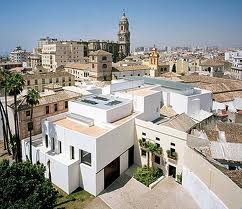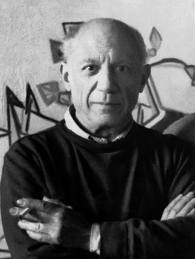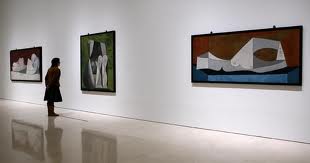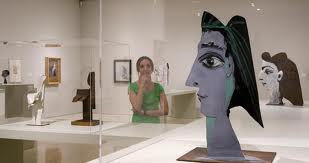Picasso Museum Malaga
Where: Palacio de Buenavista with calle San Agustín, 8. 29015
Opening hours: Tuesday to Saturday from 10 am to 9 pm, Sunday and holidays from 10 am to 8 pm. December 24 and 31 from 10 am to 3 pm. Closed on Mondays (except in July and August), December 25 and January 1.
If you have in mind learning Spanish in Málaga, we strongly recommend a visit to the museum in Picasso's birth town dedicated to the father of modern artwork.
Pablo Picasso
Even if you're not an art fan, it is very likely that you have heard of Pablo Picasso, considered one of the most important representatives of modern art and father of the cubist movement.

Picasso was born in Málaga, in 1881. He is best known for his cubist paintings, although he was also an accomplished sculptor, and took on different techniques such as drawings, printing, book illustration, ceramics, among others. Picasso also experimented with a series of pictoric styles, including surrealism. even before he arrived at cubism.
The artist didn't live in Málaga long though, since his parents moved to Barcelona when he was a teenager. He then went to study art in Madrid, and later on his residence would often alternate between Barcelona and Paris, where Picasso would meet other young, struggling artists who would one day become the greatest modern art masters.
As a painter, Picasso was highly changeable and dynamic. However, he had an distinct personal style, a visible hallmark in all his known periods, such as his early 'blue period', the 'rose period', the 'green period' or the 'African period'.
In 1908, Pablo Picasso and Georges Braque, taking Les Demoiselles d'Avignon as a starting point, formulated cubism (Henri Matisse came up with the name), an art movement that would constitute a radical inflection point in the history of art, which inspired the rest of the avant-garde movements to come. Any attempt at pictoric illlusionism was abandoned, rejecting the naturalist description in benefit of forms abstracted from conventional perception, playing with three dimensionality and surface structures.

Aside from cubism, Picasso continued painting in many different styles, such as surrealism, pointillism, neoclassicism, mannerism, etc. He also painted different genres: genre scenes, portraits, landscapes, still lifes among others.
His love of life was alsonotorious. He married twice but lived with several women, and had well publicised love affairs. He died in 1973 at 91 of a lung edema in Mougins, France.
The Málaga Picasso Museum and its collection
The Málaga Picasso Museum is housed in the Buenavista Palace. Located in the city's historical centre, it's an imposing example of 16th century architecture from Andalucía, in which Renaissance and Mudéjar elements are harmoniously blended. It was declared a national monument in 1939 and rented out to the state in 1946 to install the District Museum of Fine Arts, which opened in 1961 and functioned in the building until 1997, when it was acquired for the future Málaga Picasso Museum.

The Málaga Picasso Museum is an answer to Picasso's own express desire for his work to be present in his birth town. The creation of the museum is owed to Christine and Bernard Ruiz-Picasso, the artist's daughter in law and grandson, whose donations make up the nucleus of the museum's collection, as well as to the Andalucía Junta (regional government) who took on the task to create a museum project dedicated to the artist, whose styles and techniques changed the course of modern art. Any good Málaga city guide will feature the museum among its to-do list of cultural activities.
The idea for the museum was conceived in 1953, from the contact between Pablo Picasso and Juan Temboury Álvarez, Málaga's fine arts regional delegate. Nevertheless, the initial project wouldn't see the light of day any time soon. Christine Ruiz Picasso, widow of Pablo Picasso's oldest son, Paul Ruiz-Picasso, resumed the contacts with Málaga in 1992. The museum opened in 2003, 50 years after the first conversations.
The Málaga Picasso Museum gathers 223 works that encompass Picasso's revolutionary innovations, as well as a large variety of styles, materials and techniques that he mastered. From the first academic studies to his classicist personal vision, from the superimposing of various planes to his ceramics investigations, from his personal interpretation of the great masters to his last paintings done, in the 1970s.
Even if you choose another destination in Spain we recommend you at least visit the museum, should you spend some time in Málaga.



